 Indians Archive
Indians Archive  Opposite Field #15: Michael Brantley & The Top 10 Tribe PTBNL's
Opposite Field #15: Michael Brantley & The Top 10 Tribe PTBNL's
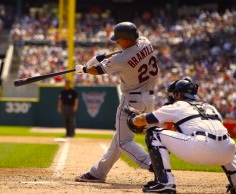 Life’s no picnic for the "player to be named later."
Life’s no picnic for the "player to be named later."
Since the Indians acquired him four summers ago, Michael Brantley has been the oft-overlooked Jan Brady of the CC Sabathia trade— the dutiful youngster cast in the shadow of a more glamorous (or at least more publicized) sibling. “No matter what I do, it’s always MaTola, MaTola, MaTola!” This season-- even with Matt LaPorta mostly “away at school” in Columbus— Brantley has garnered relatively little praise for his stellar efforts; be it his 19-game hit streak or increasingly flashy leather in center field. Do we simply doubt the man’s legitimacy (he did get off to a very similar start last season before fading), or is Michael Brantley an unfortunate victim of the PTBNL Effect—the uphill struggle that comes with having once been, quite literally, an afterthought?
Back on October 3, 2008, Milwaukee sent a then 21 year-old Brantley to Cleveland to complete a deal from three months earlier, when the Tribe held its first-annual Cy Young Award rummage sale. In the original trade, the Brew Crew got itself a postseason Sabathia cameo in exchange for Rob Bryson, Zach Jackson, and the supposedly “can’t miss” Matt LaPorta. From the outside, Brantley may have looked like a belated throw-in--- the bonus book-light with your Snuggie purchase. But in truth, he was the reward for several months of careful research, as Shapiro and company opted for the speedy Double-A outfielder over the slugging A-ball third baseman Taylor Green. In the years since, Green has disappointed in limited duty with the Brewers, hitting .255 with 2 homers across 47 games, while Brantley has emerged as a steady everyday player for the Tribe.
Of course, just sticking in the Majors helped Brantley separate himself from the vast majority of Cleveland’s “players who were named later”-- a graveyard of career minor leaguers that’s recently included the likes of Jeff Stevens (Brandon Phillips trade), Mickey Hall (Paul Byrd trade), and Yohan Pino (Carl Pavano trade). But while PTBNL expectations are clearly low for a reason, there have still certainly been a handful of players who’ve walked in Brantley’s shoes before—overcoming those scarlet letters to earn the respect of the Cleveland faithful. Few of them were superstars, mind you. But none of them settled for anonymity.
The Top 10 “Players To Be Named Later” in Indians History
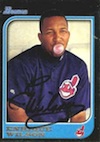 10. Enrique Wilson (Infielder, 1997-2000)
10. Enrique Wilson (Infielder, 1997-2000)
In February of 1994, the Indians sent Double-A pitching prospect Shawn Bryant to Minnesota for a bucket of nothing. A few weeks later, the blockbuster deal was finalized when the Twins identified the bucket as 19 year-old Dominican shortstop Enrique Wilson. Bryant quickly puttered out in Triple-A and never made it to the Show, but Enrique matured into a solid prospect and went on to a decade-long career as a serviceable-- if not particularly electrifying-- utility man. He was hitting .325 for the Tribe in 2000 when they recycled him at the trade deadline to get the loveable Wil Cordero.
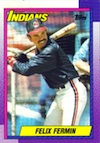 9. Felix Fermin (Shortstop, 1989-1993)
9. Felix Fermin (Shortstop, 1989-1993)
If El Gato isn’t one of the more celebrated PTBNLs in Tribe lore, it’s only because of the PTBNL that Cleveland gave up to acquire him. On November 28, 1988, the Indians made a seemingly innocuous holiday season deal with Pittsburgh, sending “somebody” to the Pirates for utility man Denny Gonzalez and “somebody else.” The following March, the mystery men were revealed. The Tribe got 25 year-old shortstop Felix Fermin, and the Pirates received former 1st round draft pick Jay Bell, who’d hit just .218 in 70 games for Cleveland in 1988. In a Brandon Phillips-like twist, Bell became an all-star in the NL, but Fermin served his purpose—first as the Tribe’s banjo-hitting everyday shortstop for FIVE years, then as a piece in the 1993 trade that brought Omar Vizquel to Cleveland.
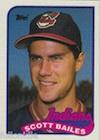 8. Scott Bailes (Pitcher, 1986-1989)
8. Scott Bailes (Pitcher, 1986-1989)
A year after drafting Jay Bell as their supposed shortstop of the future, the Indians unloaded their veteran backup shortstop Johnnie LeMaster as part of another low profile exchange with the Bucs. The trade was hatched on May 30, 1985, and concluded on July 3, when Cleveland got Double-A southpaw and Chillicothe native Scott Bailes as the PTBNL. Soon, Scottie had found a niche as a spot starter / long reliever with the Wahoos, winning 31 games across four seasons. But by 1990, he’d relocated to Anaheim, dealt for the first incarnation of the mighty Jeff Manto.
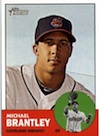 7. Michael Brantley (Outfielder, 2008-Present)
7. Michael Brantley (Outfielder, 2008-Present)
If you think Brantley is having his breakout campaign this season, it’s probably worth noting that at this time a year ago (through 59 games), he actually had a higher batting average (.288 vs .286), higher OPS (.777 vs .721), and more homers (5 vs 1). As it stands, Brantley could have a long, successful career ahead of him, or something more akin to the brief shelf life of a Jody Gerut... or Mickey Brantley, for that matter. Either way, Michael's already one of the top PTBNLs in Indians history. So throw him some love, how about?
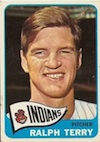 6. Ralph Terry (Pitcher, 1965)
6. Ralph Terry (Pitcher, 1965)
If Ralph Terry knew the PTBNL tag had already been placed on him, he sure didn’t show any signs of it. In September of 1964, the Indians dealt pitcher Pedro Ramos to the Yankees for $75,000 and two players to be named later. With Ramos’ help out of the pen, New York snagged the pennant yet again. But in Game 4 of the ’64 World Series against the Cardinals, it was the veteran Terry that got the call in relief; his team trailing 4-3. Ralph had surrendered the famous World Series-winning homerun to Bill Mazeroski in 1960, then found redemption by winning the MVP honors himself in the ’62 Fall Classic. Now, in a limited role, he'd pitch two shutout innings, striking out three and keeping New York in the game. It’d be his final appearance as a Yankee. Less than a week after they lost the series in seven games, the Pinstripes announced Terry as one of the PTBNLs in the Ramos deal. He was now a Cleveland Indian. He was a good one, too, going 11-6 with a 3.69 ERA and sparkling 1.07 WHIP for the Tribe in 1965. That was Ralph Terry’s last hurrah, though. He was traded to Kansas City the next season and was out of the league by the age of 31.
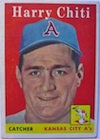 Honorable Mention: Harry Chiti (Catcher, 1962)
Honorable Mention: Harry Chiti (Catcher, 1962)
No discussion of players-to-be-named-later is complete without a brief mention of Harry Chiti, the first man ever traded for himself. The story is a simple one. In April of 1962, the Indians traded the journeyman catcher Chiti to the expansion New York Mets for a PTBNL. Chiti played 15 games for New York, hitting just .195. Unimpressed, the Mets completed the original trade on June 15, naming Harry Chiti as the PTBNL going back to Cleveland. Thus, Harry Chiti was traded for Harry Chiti. The poor guy never played another game in the Bigs, either, but he lives on in the Hall of Fame of quirky trivia.
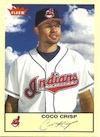 5. Coco Crisp (Outfielder, 2002-2005)
5. Coco Crisp (Outfielder, 2002-2005)
A few weeks after the Bartolo Colon trade signaled the official end to the Era of Champions, the Indians continued purging their rotation by sending Chuck Finley to St. Louis for a minor league schlub and a PTBNL. Fans roared in outrage. Tawny Kitaen changed her travel plans. And on August 7, 2002, the Cardinals announced the last piece of the deal. His name… was Coco Crisp. Yes, it’s been a decade since we all stopped what we were doing to collectively make fun of the name of Akron’s new outfielder. Within a couple years, though, Coco had shown he was no joke—putting up what would prove to be career years in 2004 and 2005 (averaging 15 HR, 70 RBI, and a .300 avg). His eventual trade to Boston for Andy Marte could have gone down in infamy if not for Coco’s own injury-plagued fall from relevance.
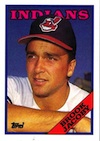 4. Brook Jacoby (Third Baseman, 1984-1992)
4. Brook Jacoby (Third Baseman, 1984-1992)
No player-to-be-named-later ever went on to log more service time for the Tribe than two-time all-star and sad-eyed laddie of the hot corner, Brook Jacoby. A seventh round pick of the Braves in 1979, Brook was still biding his time in Triple-A Richmond when he became the last piece of the trade that sent the occasionally infallible Len Barker to Atlanta. In the first phase of the swap—August 28, 1983-- Cleveland only got $150,000 in cash and a promise of “two other fellas.” On October 21, the prospects were revealed. And by the following summer, Tribe fans realized that Len Barker had left them with some mighty fine parting gifts. For Jacoby’s part, he was famously more of a slugger than a run producer (his 32 HR, 69 RBI season in ’87 is still a headscratcher), but across nine seasons in Cleveland, he was a .273 hitter with a .750 OPS, 120 homers, and 524 RBIs. He’s also in the top ten in franchise history in strikeouts and double plays grounded into. That was our Brook.
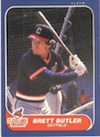 3. Brett Butler (Outfielder, 1984-1987)
3. Brett Butler (Outfielder, 1984-1987)
And would you believe that very same Lenny Barker trade also delivered my first childhood baseball hero, Brett Butler (not to be confused with my first redneck-female-comedy hero, Brett Butler)?! Despite being a PTBNL, Brett had already established himself as an exciting, everyday player for the Braves in 1983, hitting .281, swiping 39 bases, and leading the league with 13 triples. At 27, he was a bit of a late bloomer, but his best years were ahead of him. Though he’d go onto greater acclaim in San Francisco and L.A., Butler was arguably at his peak in Cleveland, where he averaged 5 HR, 48 RBI, 99 runs, 41 steals, a .288 AVG, and .768 OPS across four seasons-- sharing his prime with Eddie Murphy and Huey Lewis. Brett is still #8 on the Indians’ all-time steals list.
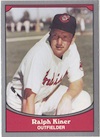 2. Ralph Kiner (Outfielder, 1955)
2. Ralph Kiner (Outfielder, 1955)
He’s the only former Tribe PTBNL to wind up in the Hall of Fame, but the Cleveland chapter of Ralph Kiner’s story is predictably also the saddest chapter. Just a couple years removed from leading the National League in homers seven straight seasons, the former Pirates star had lost some luster during two years with the Chicago Cubs, as persistent back problems had begun to reduce the 31 year-old's power. Nonetheless-- as players-to-be-named-later go-- it didn’t get much bigger than November 16, 1954, when Chicago surprisngly added Kiner to a trade that had begun with Cleveland sending Sam Jones to the Cubbies back in September. Indians GM Hank Greenberg was old pals with Kiner, and as a token of good faith, Ralph offered to take a 40-percent pay cut to ease his transition to the new club. The selfless deed was not rewarded with good fortune on the field, however. While Kiner put up solid numbers in 113 games-- .243 AVG, 18 HR, 54 RBI, .818 OPS—his back condition worsened. At the age of 32, he announced his retirement—a sure fire 500 homerun career cut short.
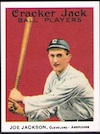 1. Shoeless Joe Jackson (Outfielder, 1910-1915)
1. Shoeless Joe Jackson (Outfielder, 1910-1915)
If you build it… etc etc. Joe Jackson is, of course, not a Hall of Famer, but that is certainly not a consequence of his statistics. He was easily one of the greatest players of the Dead Ball Era; a career .356 hitter with a .940 OPS. Back in 1910, though, he was just an unproven, 22 year-old country boy with the Philadelphia A’s. On July 23rd of that year, Philly struck a deal with the Cleveland Naps to reacquire their former outfielder Bris Lord, aka “The Human Eyeball” (man, the early days of baseball were awesome). In exchange, Cleveland received infielder Morrie Rath and a PTBNL. Just a week later, Shoeless Joe became a Nap. And by the following season, he was well on his way to icon status, hitting .408, driving in 83 runs, and stealing 41 bags. He’d lead the league in hits in 1912 and 1913, with his average dipping to a meager .395 and .373, respectively. Jackson’s Cleveland career concluded in 1915, when he was dealt to the White Sox for Ed Klepfer, Braggo Roth, $31,500, and—naturally—a player to be named later. The player was Larry Chappell—a 25 year-old outfielder like Michael Brantley. Except that Larry Chappell never amounted to jack squat.
- NBA Announces 2013-2014 Schedule
- Browns Ink Sharknado
- Sharknado A No-Show For Rookie Camp
- Trent Richardson Out Until Training Camp
- Browns Sign Brandon Jackson
- Carrasco Suspended Eight Games
- Browns Add to Wide Receiver Depth with David Nelson
- Browns Need to Learn from Past Draft Mistakes
- Browns Release Chris Gocong and Usama Young
- Browns Missing on Grimes Disappointing, But Not The End
The TCF Forums
- Chris Grant's first 3 drafts
Kingpin74 (Tuesday, January 21 2014 10:13 AM) - The 2014 Offseason Thread
googleeph2 (Tuesday, January 21 2014 9:36 AM) - 2015 Recruiting
furls (Tuesday, January 21 2014 6:57 AM) - Mike Brown
YahooFanChicago (Monday, January 20 2014 11:15 PM) - Movies coming out
HoodooMan (Monday, January 20 2014 9:34 PM) - 2014 Hoops Hockey Hijinx
jpd1224 (Monday, January 20 2014 4:44 PM) - 2014 Recruiting
jclvd_23 (Monday, January 20 2014 2:26 PM) - Wish List - #4 Pick
Hikohadon (Monday, January 20 2014 1:26 PM) - Official- Browns Coach Search/Rumors
OldDawg (Sunday, January 19 2014 6:48 PM) - #1 overall pick Anthony Bennett
TouchEmAllTime (Sunday, January 19 2014 1:28 PM)


